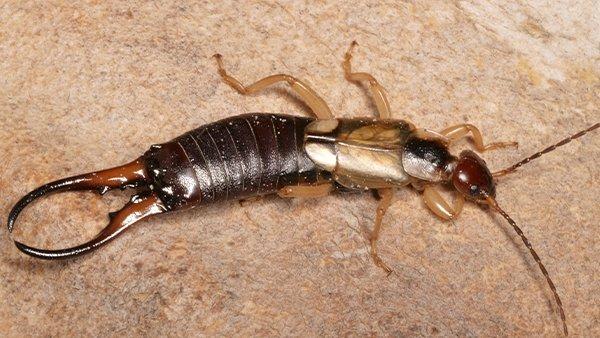When you were little, you may have heard tales of bugs that crawl into your ears at night and eat your brain along with the many monsters hiding under your bed. Now that you're an adult, you most likely know that these stories are false. However, if you come across an earwig in the bathroom at night, you may still feel frightened.
These pests have pincers at the back of their abdomen and long, flattened bodies that are not a welcome sight in your home. What exactly do you need to know about these pests? Are they dangerous? How can you prevent them? Here's a guide to get you started.
What Are Earwigs?
Earwigs are black, brown, or red. They are usually about an inch long and have long bodies with pincers at the back. They also have two pairs of wings, though thankfully most earwigs don't fly. They may glide or fly in bursts, but some species don't fly at all.
Old wives' tales in Europe describe horror stories of earwigs crawling into ears to either eat brains or lay eggs. These stories are fables. In fact, earwigs avoid humans and spend their days hiding in dark, moist areas like beneath rocks or logs. Even when they come out to eat during the night, they tend to avoid humans.
Earwigs In The Home
Earwigs are a garden pest. They mostly eat plants, as well as some small insects or decomposing materials. It's rare for them to get comfortable in a home.
If earwigs do get inside, it's likely because they found areas with high moisture content and soil, such as an unfinished basement.
They may be drawn toward your house if you have woodpiles, leaf piles, or dense plants against your home's exterior. Once they're close to your house, they may get inside through holes and cracks in the exterior or uncovered vents.
Luckily, earwigs aren't particularly dangerous. They don't carry diseases and will only pinch humans if attacked. Even then, they rarely break the skin and aren't venomous. However, you still don't want earwigs around.
Earwigs can damage houseplants, and some species release a foul odor when frightened. Plus, these pests are not pleasant to encounter unexpectedly! Having earwigs in your home may also attract other pests who feed on them.
Protecting Your Home From Earwigs
Now that you know why you need to protect your home, the question is how. Start by blocking off their entry points.
- Use steel wool and caulking to fill in cracks and holes.
- Make sure to seal your windows properly.
- Check your screens for holes or tears.
- Cover any attic and foundation vents.
- Use a dehumidifier in the moist areas of your home like the basement, attic, and bathroom.
- Keep firewood away from the exterior walls of your home.
- Don't leave leaf piles in your yard.
- Call All-Safe Pest & Termite to take care of your earwig problem.
If you have an earwig problem, don't hesitate to call the professionals. We'll inspect your home to find out why earwigs keep coming inside. We'll help you make the environmental changes necessary to keep these pests away.
We'll also help you find out whether earwigs have already attracted predator pests like spiders, and we can eliminate any bugs in your home. Earwigs won't eat your brains or lay eggs in your ear. But that doesn't mean they should be living in your basement. Find out how we can help.



